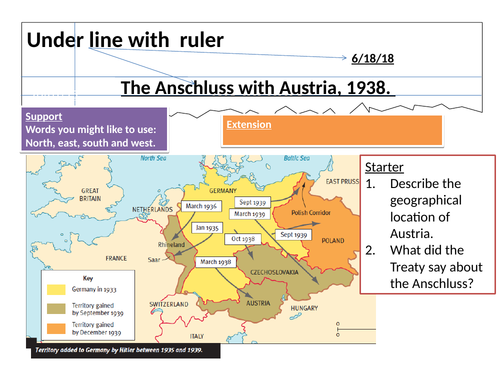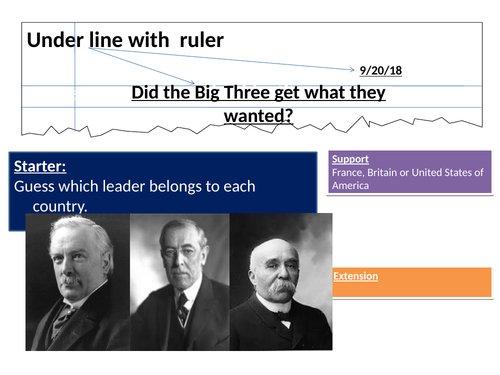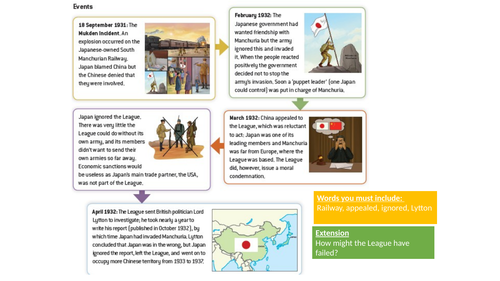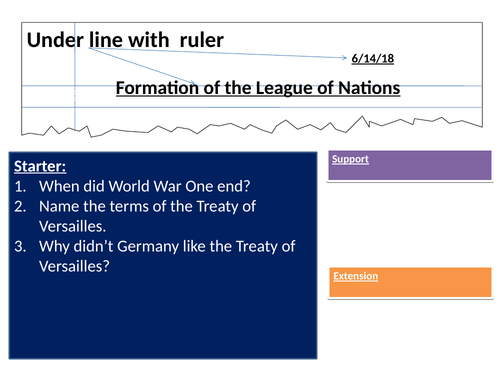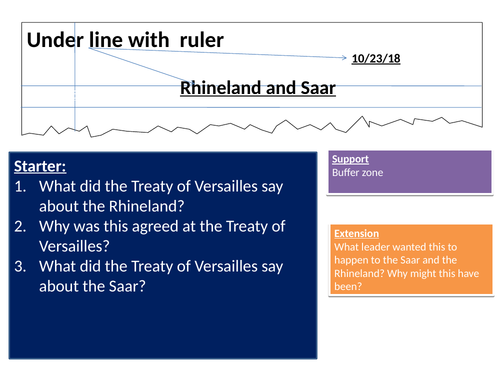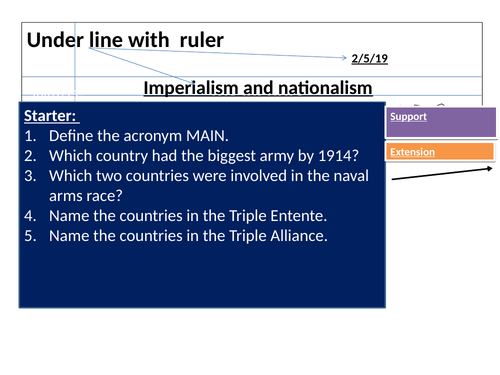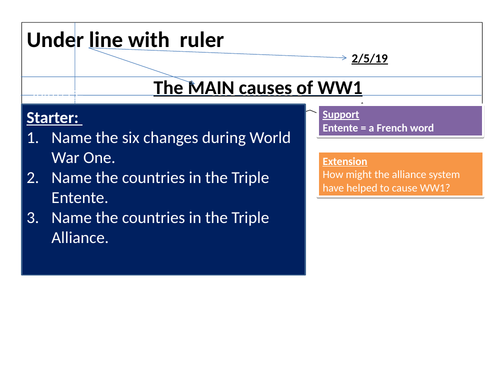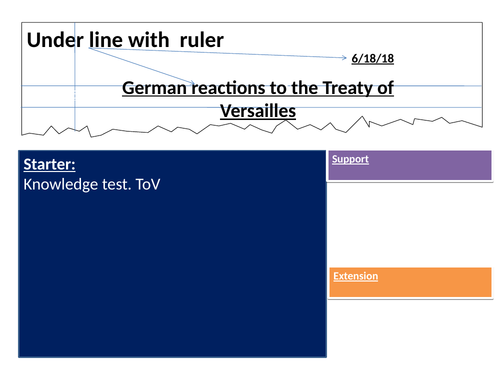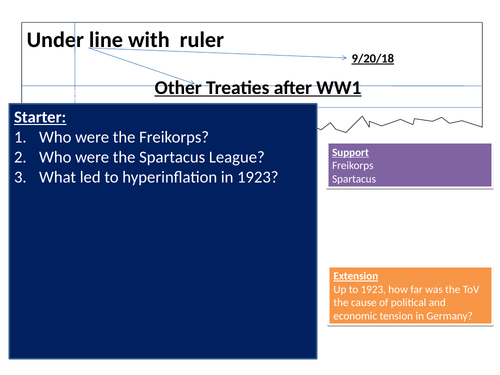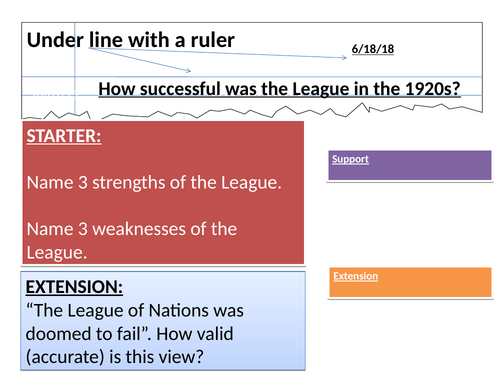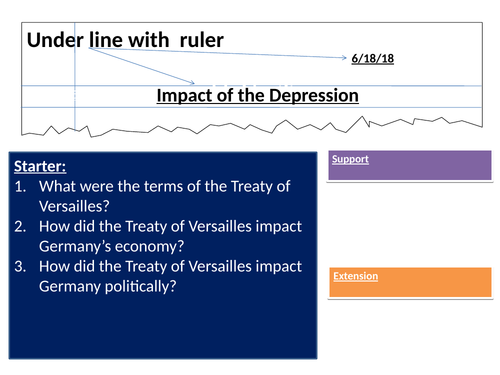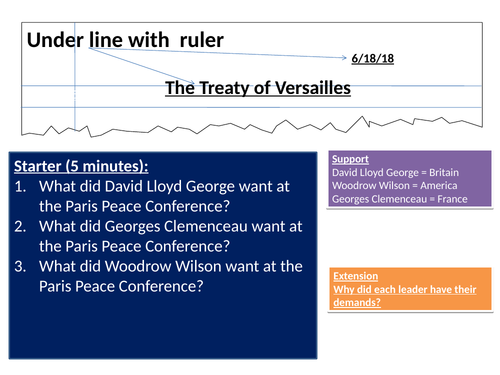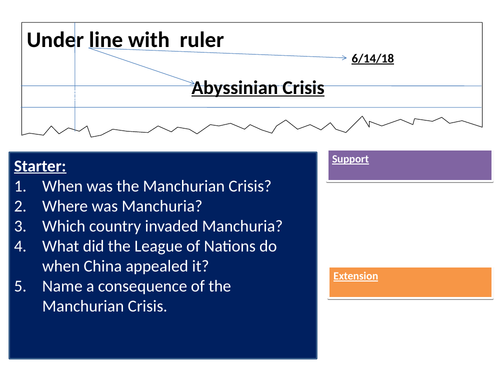60Uploads
11k+Views
16k+Downloads
All resources

Manchurian Crisis 3 lessons
Three lessons, including a source lesson from JohnDClare, on the Manchurian Crisis.
Used for IGCSE. No textbook required.

Edexcel History Cold War revision sheets
A3 individual revision pack. You will need the published textbooks.

iGCSE Edexcel The USA, 1918-41 History, (paper 2 - A3)
This is a series of lessons that cover the iGCSE Edexcel History paper 2 (A3) The USA, 1918-41.
The Edexcel International GCSE (9-1) History The USA, 1918-41 Student Book (ISBN 978-0435185459) has been used throughout the ppts. You, or your students, will need access to this book.
Previous exams from 2019 to 2023 have been used throughout the lessons. I have matched them up by topic and included the mark scheme after. The exclusion of 2024 exams means you will be able to use this for any mock exams.
A learning checklist is included. This gives you an overview of the content and when it has been examined.
22 Lessons include:
1.0 America in the early 20th century
1.1 The economic benefits of the First World War
1.2 Causes of Boom
1.3 Old industries
1.4 Leisure industry
1.5 Women and flappers
2.1 attitudes and policies towards immigration
2.2 The Palmer raids and Red Scare
2.3 Sacco and Vanzetti
2.4 African Americans and KKK
2.5 Morals & values and Monkey Trial
2.6 Prohibition and organised crime
3.1a Wall St. Crash
3.1b Great Depression and causes
3.2 Hoover’s reaction to GD
3.3 Impact of the Great Depression - 2 lessons worth of work
4.1 Roosevelt
4.2 Second New Deal
4.3 Impact of Second New Deal
4.4 Rural electrification and Pros & cons of New Deal
5.1 Opposition to the New Deal
5.2 Radical criticism

iGCSE Medicine Edexcel c1848-1948History (paper 2 - B2)
iGCSE medicine Edexcel series of lessons
history of medicine
Edexcel
This is a series of lessons that covers Edexcel’s iGCSE history B2 Changes in medicine, c1848–c1948.
Link to free content revision [https://www.tes.com/teaching-resource/resource-12942792 ][https://www.tes.com/teaching-resource/resource-12942792)
Link to (paid) exam lesson with answers to most regularly assessments: https://www.tes.com/teaching-resource/resource-12941140
If there is exam question that is related to the lesson, it has been included at the end of the ppt, with the mark scheme. Updated with 2023 exam questions
The lessons are squeezed into 21 lessons:
1.1 Barriers to Progress
1.2 & 2.4 Nightingale and Scutari - 2r, Nov 2020, b
1.3 Dangers in surgery - 2b, June 2020, b
1.4 Problems and improvements in public health - 2b, June 2022, Cii
2.1 & 3.1 Pasteur and Koch - 2br June 2022, ©
2.2 Lister and impact of antiseptics - 2019, 2022
2.3 improvements in public health - 2021, 2022
2.5 Elizabeth Garrett and progress of women - 2021, 2022
3.2 Improvement in surgery - 2r, June 2019, Qb
3.3 Impact of Public Health Act, 1875
3.4 Science and medicine - 2.Nov 2020 Ci
3.5 Marie Curie
4.1 The Liberal Government’s public health measures
4.2 WW1 and medical treatment - 2r, June 2019, a
4.3 WW1 and surgery - 2019, 2020, 2021 & 2022
4.4 WW1 and women
5.1 Fleming, Florey, and Chain (penicillin) - 2019, 2021, 2022
5.2 WW2 and surgery - 2. Nov 2020, a
5.3 WW2 and women
5.4 WW2 and other medical developments - Nov & June 2021
5.5 NHS and its Impact
• Most of the lessons use the Pearson Edexcel International GCSE (9-1) History Changes in Medicine, c. 1848 – 1948 book (ISBN 9780435185404).
• Each lesson begins with knowledge recall that is self-assessed.
• Relevant past exam questions are included, with mark schemes. Some questions have a choice of multiple different exam questions. For example, 4.3 WW1 eas examined in 2019, 2020, 2021 & 2022. All of these Qs have been included at the end of the ppt.
• There is also a Personalised Learning Checklist (PLC) that breaks the specification down into its constituent parts and tracks what exam questions have been asked for each topic. This reveals what topics seem to be asked multiple times and allows students to practise those questions.
• There is an A3 homework sheet to give out. The pupils will need access to YouTube. They watch a video about the topic and then write down a few bullet points. The idea is that they do this before they arrive to lesson, but it could be used as homework too.
#igcse #historyofmedicine

Rhineland and Saar
Made for IGCSE
There are reading sheets, but they are easily replaced with information from a textbook .

What was the Industrial Revolution?
This is a stand alone lesson that explores the key themes of the Industrial Revolution.
Link to FULLY RESOURCED SoW here https://www.tes.com/teaching-resource/resource-12888896
Learning objectives:
identify changes from 1750 to 1900.
describe the changes that took place from 1750 to 1900.
Explain the impact of change over 150 years.
There is printing for this lesson. AfL is included. This includes the answers to the activities.

The best IT based AfL tools
IT based Assessment for Learning tools.
These Assessment for Learning tools can greatly enhance your teaching methods by providing real-time feedback, promoting engagement, and allowing you to tailor instruction to meet your students’ needs. Remember to choose the tool that best aligns with your teaching style and objectives.
This is a table with the ten best tools with links, description and how to use.

First and second Moroccan Crisis
GCSE Modern World History (Walsh, 2001) has been used for the lesson.

Political impact of the Treaty of Versailles.
Political impact of ToV.
No textbook required.
Used for IGCSE History.

German reactions to the Treaty of Verailles
AQA textbook required. Many other textbooks will include the same content.

Other Treaties after WW1
Used for IGCSE.
Treaty of Sévres
Treaty of Trianon
Treaty of Neuilly
Treaty of St Germain

Abyssinian Crisis
Two lessons on the Abyssininan Crisis.
A few resources taken from JohnDClare.
Used for IGCSE.

